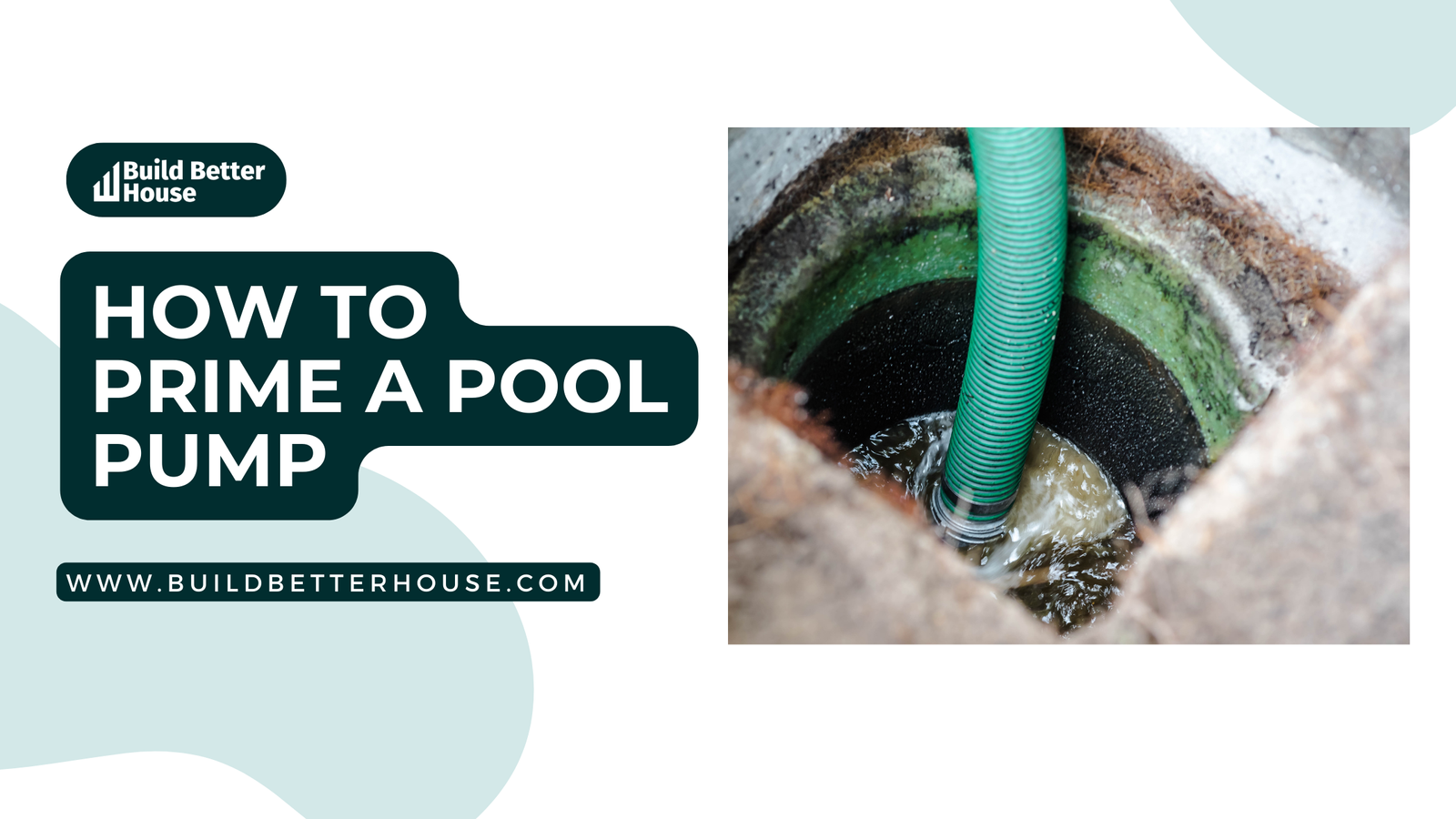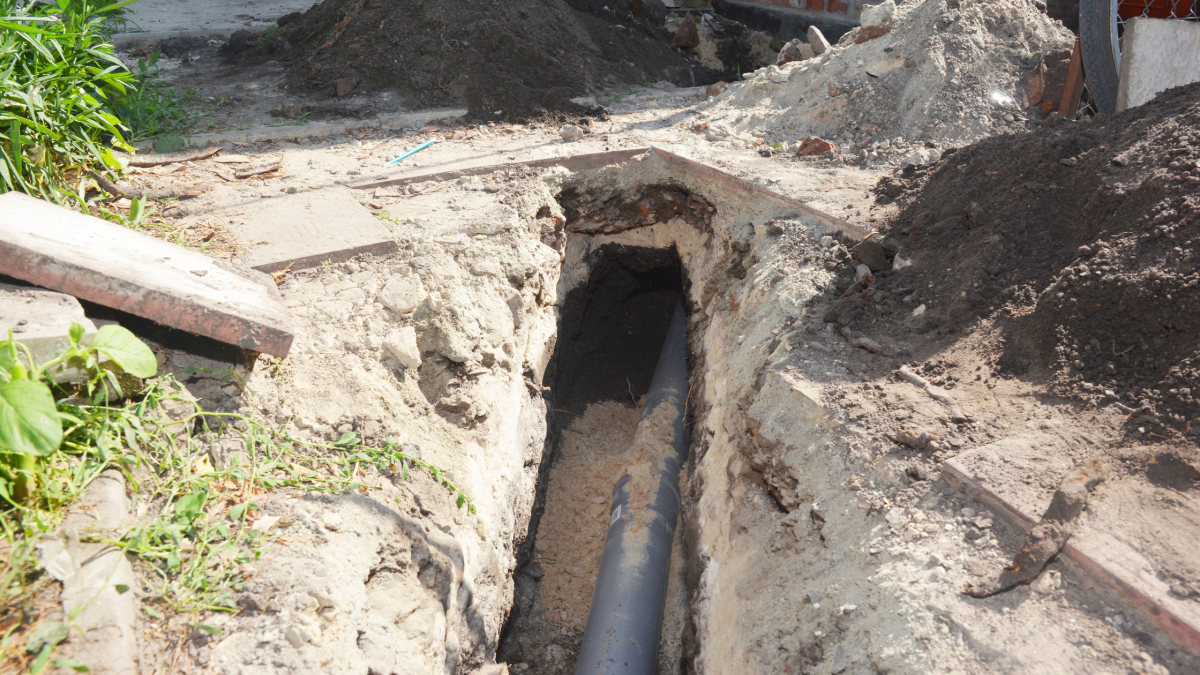How to Find Septic Tank Lid: Expert Tips and Tricks

Locating your septic tank lid is a crucial task for any homeowner with a septic system. Not only is the ability to locate the lid important for regular maintenance, but it is also crucial when faced with emergencies or issues relating to your septic system. Assessing the general health and functionality of your septic system begins with finding and accessing the septic tank lid, making it an essential skill for homeowners.
In this article, we’ll explore the steps, tools, and precautions necessary to locate your septic tank lid. From understanding the components of your septic system to utilizing professional assistance, we’ll provide clear guidance to help you find your septic tank lid with confidence. It is important to act carefully and responsibly when working with septic systems to ensure your safety and the well-being of your property.
Key Takeaways
- Locating the septic tank lid is important for maintenance and addressing emergencies
- Using metal detectors and soil probes can help in the search process
- Regular maintenance and professional assistance are recommended for septic system health
Recognizing the Importance of Locating Septic Tank Lid

As a homeowner or new homeowner, it’s essential to know the location of your septic tank lid. This knowledge is crucial to the proper maintenance and upkeep of your septic system. When you’re aware of where the lid is located, you can quickly and easily access it for regular inspections or when you notice signs of potential issues, like bad odors.
Being able to locate the septic tank lid allows you to:
- Monitor the septic system’s health: Regular inspections are key to preventing unpleasant surprises, such as system failures, backups, or overflows.
- Perform necessary maintenance: Knowing where the lid is located ensures you can promptly clean or pump the tank when required, prolonging the lifespan of your septic system.
- Detect and address issues early: If you start noticing bad odors or other signs of trouble, being able to access the lid allows you to investigate and resolve problems before they escalate.
Overall, finding your septic tank lid and staying informed about its location contributes to a more efficiently functioning septic system. As a responsible homeowner, this knowledge will help you maintain a healthy and well-maintained property.
Understanding the Septic System Components
When trying to locate your septic tank lid, it’s important to first understand the various components of a septic system. A typical septic system consists of a septic tank, sewer line, drainfield, and vent.
The septic tank is a watertight container made of concrete, fiberglass, or polyethylene, and buried underground. It receives wastewater from your home and separates solids from the liquid. Over time, the solids break down and the liquid exits the tank through pipes into the drainfield.
The lid is the access point for your septic tank, and can be found on top of the tank. It can be made of various materials, including concrete, plastic, or metal and can be secured with screws, bolts, or a metal handle to keep it closed.
Vents play a crucial role in allowing gases to escape from the septic system. They can often be found on the roof of your home and are connected to the septic tank via a network of pipes.
The pipes in a septic system transport wastewater between your home, the septic tank, and the drainfield. Proper slope and placement is important to ensure efficient functioning of the system.
The sewer line is the main pipe connecting your home’s plumbing system to the septic tank. It transports all of the wastewater generated by your household activities to the tank.
The drainfield is an important part of the septic system, responsible for dispersing wastewater from the septic tank into the soil. The liquid flows through perforated pipes, gravel, and soil, helping to remove any harmful contaminants before it reaches groundwater.
A septic tank riser is an optional component that can be installed to provide easier access to the tank lid. It is a vertical pipe that connects the tank lid to the surface, often with a secure cover.
Easy Steps to Locate your Septic Tank Lid
As a homeowner, knowing the location of your septic tank lid is essential. It will enable you to perform routine maintenance and address any issues quickly. To locate your septic tank lid, follow these easy steps:
- Examine your yard: Start by walking around your property and look for signs indicating the presence of a large buried object in your yard. Visible clues might include an area where the grass is greener or healthier, or a subtle depression in the ground.
- Consult the manufacturer or property records: If you have access to your property’s blueprints or septic system installation records, these documents might provide valuable information about the tank’s location. Additionally, you can contact your septic tank’s manufacturer for guidance.
- Probe the ground: Using a metal probe, gently poke the ground every few feet to find the buried lid. Septic tank lids can be up to a foot deep on average. Keep an eye out for any bumps or irregularities in the soil that may indicate something is buried underneath.
- Use a metal detector: If you’re unable to locate your septic tank lid using the previous methods, try a metal detector. Most lids have a metal handle or fastener, making them detectable by this device. Adjust the sensitivity to the highest level and walk slowly in a grid pattern over the suspected septic tank location.
By following these steps, you should be able to confidently and knowledgeably locate your septic tank lid. Remember to exercise caution when digging or probing the ground to avoid damaging your septic system or other underground utilities.
Using Metal Detector and Soil Probes
Utilizing a metal detector and soil probes to find your septic tank lid can be quite effective. If you know your septic tank is made of materials such as steel or has metal components like handles, a metal detector can help locate it quickly.
Begin by walking around the area where you think your septic tank might be located, with your metal detector powered on. Sweep the device back and forth to ensure proper coverage. Give extra attention to any area where the metal detector indicates the presence of metal, as this could be the lid or the tank itself.
In addition to using a metal detector, employing a soil probe can help confirm the presence of your septic tank lid. A soil probe is a long, sturdy piece of metal or fiberglass with a sharp end that you can push into the ground in a small area to determine if there is something buried underneath, such as a septic tank lid, which is typically located up to a foot below the surface.
To use the soil probe, start in the area where the metal detector provided a positive signal or where you suspect the septic tank to be. Push the soil probe into the ground every couple of feet, probing for any hardness or resistance that may indicate the presence of the septic tank lid. Be cautious not to damage the lid or any underground pipes during this process.
Once you have located the septic tank lid using both the metal detector and the soil probe, it’s essential to mark its position accordingly for future reference or maintenance. You can use a visible marker like a painted stake or an above-ground identifier for easy recognition.
Remember that finding the septic tank lid may require some time and patience, as the exact location might not be obvious at first. In some cases, you may need to expand your search area or consider asking neighbors if they have any knowledge or records of the septic system’s location in your property.
Professional Assistance in Locating Septic Tank Lid
If you’re having trouble locating your septic tank lid or prefer to seek professional help, there are several options available. Engaging the services of a professional can save time and effort while ensuring the job is done accurately and safely.
Consult the County Building Department Your local county building department may have records of your property’s septic system, including the location of the septic tank and its lid. These records can provide valuable information to help you or a professional locate the lid with greater ease. Contact your county building department, and they might be able to provide you with a site plan or other documentation containing this information.
Hire Service Professionals A variety of service professionals can assist you in locating your septic tank lid. Plumbers, septic system contractors, and environmental engineers all have the necessary experience and tools to find the lid quickly and efficiently.
When choosing a professional, consider the following factors:
- Experience: Ensure the professional you choose has experience locating septic tank lids and is knowledgeable about different types of septic systems.
- Reputation: Look for online reviews, and ask for recommendations from friends, family, or neighbors who have used similar services.
- Cost: Request quotes from multiple professionals to compare prices and find a service within your budget.
Benefits of Professional Assistance While you might be tempted to locate your septic tank lid on your own, there are several advantages to hiring a professional:
- Safety: Professionals have the necessary tools and expertise to safely locate and access the septic tank lid, reducing the risk of accidents or damage to your property.
- Time-saving: A professional can locate the lid quickly and efficiently, saving you time and effort.
- Expert advice: In addition to locating the lid, a professional can also assess the condition of your septic system and provide recommendations for maintenance or repairs.
In summary, if you’re struggling to find your septic tank lid or prefer a professional touch, consider consulting your local county building department or hiring a service professional. Their assistance can save you time, ensure the job is done accurately, and provide valuable advice on maintaining your septic system.
Importance of Regular Septic Tank Maintenance
Regular septic tank maintenance is crucial for the longevity and efficiency of your septic system. By keeping up with pumping, cleaning, and repairs, you can prevent potential problems and costly damages.
First and foremost, pumping your septic tank is essential. The average household septic system should be inspected at least every three years by a septic service professional, and septic tanks are typically pumped every three to five years. Regular pumping helps prevent the buildup of solids, which can lead to system failure and groundwater contamination.
Cleaning your septic tank is another vital aspect of maintenance. When you have your tank pumped, it’s a suitable opportunity for a thorough cleaning as well. A clean tank functions more efficiently and reduces the risk of blockages and backups in your home.
Repairs should be addressed promptly. If you notice any issues with your septic system, such as slow drains, foul odors, or soggy areas in your yard, immediately contact a septic service professional. Early detection and repair can save you from more severe, costly problems down the line.
By maintaining your septic system, you’re not only protecting your own property but also lessening your environmental impact. A poorly maintained septic tank can negatively affect the local ecosystem, especially if a water body is nearby.
In summary, regular septic tank maintenance, including pumping, cleaning, and repairs, ensures your system’s optimal performance, longevity, and protection of both your property and the environment. Remember to stay diligent with your septic system care and consult professionals when necessary.
Safety while Locating Septic Tank Lid
When searching for your septic tank lid, it’s essential to prioritize safety. Septic tank lids can be made of various materials, such as concrete, fiberglass, or polyethylene, and they can be quite heavy. Keeping this in mind, make sure you take necessary precautions during your search.
Firstly, ensure you have the proper tools and equipment. A metal probe or metal detector may help you locate the lid, and having a shovel or even a small excavator can be useful for unearthing the lid once you find it. Avoid using heavy machinery unless you’re confident in its operation, as it may cause damage or even collapse the septic tank.
It’s crucial to approach the area with caution, as the lid may be buried up to a foot deep, and uneven ground might be a tripping hazard. Also, bear in mind that septic tanks can produce harmful gases, so when you locate and open the lid, it’s advisable to keep a safe distance and avoid directly inhaling the fumes.
When handling the septic tank lid, particularly if it’s made of heavy concrete, be mindful of proper lifting techniques. Bend your knees and engage your legs and core while lifting, rather than relying on your back. This approach reduces the risk of injury during the process. If possible, have someone nearby to assist you, especially if you’re uncertain or unable to manage the weight of the lid on your own.
Lastly, remember to maintain regular inspections and maintenance of your septic system to ensure it operates efficiently and safely. By doing so, you can prevent potential issues and avoid having to search for the septic tank lid too frequently.
By following these precautions and advice, you can safely and effectively locate your septic tank lid and ensure your septic system remains in optimal condition.
Symptoms of Septic Tank Issues
Experiencing slow drains in your home could be a sign of septic tank issues. When your septic tank is not functioning properly, waste and water may not be processed as efficiently, leading to sluggish drainage. Be mindful of any unusual changes in the speed at which water drains in your sinks, bathtubs, or toilets.
Clogs are another common symptom of septic tank problems. If you notice that your toilets are frequently clogging or your sinks and showers are backing up, it could be an indication of a septic tank issue. Addressing these clogs as soon as possible is crucial for preventing further damage to your septic system.
Bad odors coming from your drains, yard, or your septic tank area are a strong warning sign of potential septic tank issues. These foul smells are usually caused by waste and gases not being properly processed and contained within the tank, leading to them seeping out and permeating your property.
Flooding in your yard, particularly around the area where your septic tank is buried, is another red flag for septic system issues. If your tank is failing to process waste correctly, it may cause an overflow of wastewater, resulting in soggy or flooded areas in your yard. Keep an eye out for unexpected wet or soggy patches on your property.
A collapse in your septic system is a severe issue that must be addressed immediately. Signs of a collapsing septic tank or system include sudden dips or depressions in your yard near the septic tank, along with other symptoms such as slow drains, clogs, and bad odors. If you suspect your septic system has collapsed, call a professional plumber as soon as possible.
In summary, be on the lookout for slow draining water, frequent clogs, foul smells, yard flooding, or indications of a collapsed septic system. Identifying these symptoms early can help you address any septic tank issues and prevent further damage to your home and property.
Possible Septic Tank Lid Locations
When searching for your septic tank lid, various factors such as the yard, slope of the land, proximity to the house, and the presence of garden decor can help determine its location. Here are some tips to help you locate the septic tank lid on your property.
Start by examining your yard for any areas that appear slightly different from the rest. These differences can involve changes in grass color, depressed areas, or even standing water. If your property has a hill, the septic tank is likely on the downslope side, as this ensures proper drainage.
Take note of any garden decor, such as pots, bricks, or statues. Homeowners sometimes place these objects over the septic tank lid as an indication of its location. However, don’t only rely on these items, as they can shift or be removed over time.
If your property comes with a garage or any other outdoor structure, consider the distance between the main dwelling and these structures. Septic tanks are often installed at a safe distance from the house and other buildings, but still easily accessible for maintenance.
When dealing with an old property, it’s essential to look for clues indicating past septic tank installations. Old property records or plans can provide valuable information regarding the location of the tank, so check them if you have access.
Finally, if you are still unsuccessful in locating your septic tank lid, consider asking your neighbors. They might be aware of the septic tank lid locations in your area, especially if their property is similar to yours or they have encountered similar issues.
By following these tips and carefully surveying your yard, you stand a good chance of finding your septic tank lid. Remember, it is crucial to know its location for proper maintenance and avoiding future problems.
Understanding Septic Tank Installation
When it comes to septic tank installation, proper placement and setup are crucial for its effectiveness and longevity. As a homeowner, it’s essential for you to understand the basics of septic tank installation in order to locate the septic tank lid and perform regular maintenance.
A typical septic tank is made of concrete, fiberglass, or plastic and serves as an underground storage system for wastewater. During installation, the septic tank is placed in a designated location, usually 15-25 feet away from your home. This ensures a safe distance from the house and avoids any potential contamination.
The top of the septic tank features a concrete lid or cover that keeps it secure and prevents unauthorized access. This lid can be buried up to a foot deep and might be difficult to locate without proper guidance. In some cases, septic tank risers are installed to make the lid more accessible. Risers are vertical pipes that extend from the tank’s cover to the ground level, providing easy access to the septic tank lid.
To ensure that the septic tank is installed correctly, it’s crucial to consult the site plan for your property. This will provide you with valuable information, such as the tank’s location and its dimensions concerning your house. With this information at hand, you can then use a metal detector or a soil probe to locate the concrete lid of your septic tank quickly and easily.
Frequently Asked Questions
What are common methods of locating septic tank lids?
There are several methods for locating septic tank lids. One common method is to probe the ground every few feet using a metal probe, searching for any buried objects. Another method involves using a metal detector, as most lids have a metal handle or fastener.
How deep underground can septic tank lids be found?
Septic tank lids can often be buried up to a foot deep, though this may vary depending on the specific system and installation.
Can a metal detector help locate a septic tank lid?
Yes, a metal detector can help locate a septic tank lid since most lids have a metal handle or fastener. Adjust the sensitivity of the metal detector to the highest level and walk slowly in a grid pattern over the area where the septic tank is suspected to be located, listening for a steady beep indicating the presence of metal.
What tools are used for septic tank lid removal?
Tools for septic tank lid removal may include pry bars, shovels, and specialty lid lifters, depending on the specific lid and its features. It is best to consult a professional if you are unsure about how to safely remove your septic tank lid.
Are there standard sizes for septic tank lids?
Septic tank lids can come in various sizes depending on the specific system and the manufacturer. Some may be round, while others might be square or rectangular. It is best to consult your septic system’s documentation or a professional to determine the correct size and type of lid for your system.
Is it possible to find septic tank locations in public records?
In some cases, you may be able to find septic tank locations in public records, such as property deeds or records from the local health or building department. Contact your local government office for assistance in locating these records for your property.






